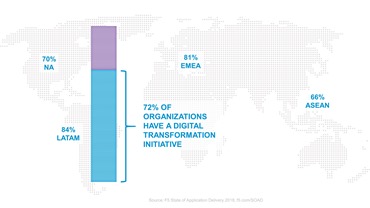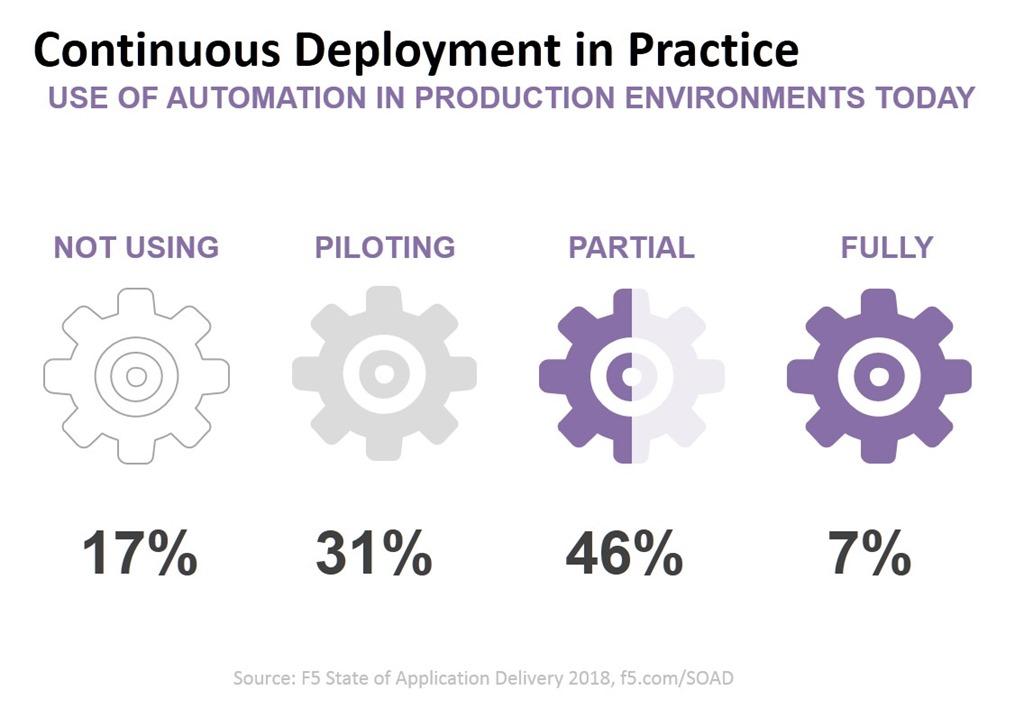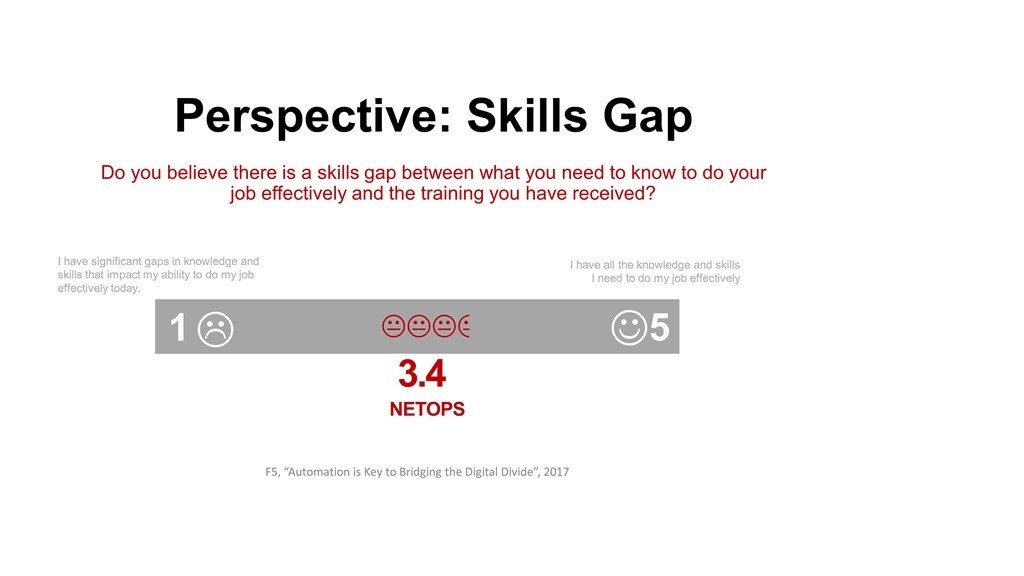Opérations réseau : Vos options sont de diriger ou de vous écarter du chemin

- Les initiatives de transformation numérique constituent une fonction forçant l’automatisation de la production. Si vous ne prenez pas l’initiative en matière d’automatisation, vous suivrez quelqu’un d’autre – si vous avez de la chance.
- Les développeurs ont une longueur d’avance en matière de compétences en codage/scripting/intégration. Mais les NetOps disposent du savoir-faire réseau qui leur manque.
- Les organisations de tous les secteurs d’activité, partout dans le monde, intensifient leur recours à l’automatisation dans la production.
- Les NetOps sont plus susceptibles de citer un manque de formation/de compétences comme un obstacle à l’automatisation des pipelines de production. Le programme Super-NetOps répond à ce défi.
La transformation numérique est peut-être une description galvaudée, surfaite et souvent abusive, mais c’est aussi un mouvement bien réel qui pousse les organisations à s’éloigner du papier et des processus manuels pour fonctionner plus pleinement dans l’économie numérique. Près de trois organisations sur quatre (72 %) dans notre état de la fourniture d’applications 2018 fonctionnent dans le cadre d’une initiative de transformation numérique. Ce qui est souvent oublié dans toutes les histoires du type « regardez ce que la marque X a fait grâce à la transformation numérique », c’est toute la sueur et les larmes qui ont été consacrées à la préparation du centre de données pour prendre en charge le dernier gadget ou la dernière application.
Car avouons-le, les applications communiquent toujours avec les services back-end, que ce soit via API ou URI, JSON ou XML, WebSockets ou sites Web. Et cela signifie qu’il existe un réseau qui sous-tend chaque application, chaque appareil IoT, chaque communication qui a lieu sur Internet à chaque seconde de chaque jour.
À quel point est-ce important ? Considérez les estimations de l'Internet Association selon lesquelles la contribution de l'activité via Internet « au PIB américain est d'environ 3,11 %, ce qui la place à peu près au même niveau que l'industrie automobile, qui a historiquement été estimée à environ 3,0-3,5 % du PIB aux États-Unis (Center for Automotive Research, 2015) ». L’ association a également noté qu’Internet contribuait à environ 5,3 % du PIB des économies du G20 et à 5,7 % du PIB de l’UE en 2016. Ce n’est pas de l’équipement, c’est une activité. Chaînes d'approvisionnement, ventes au détail, transactions financières. Toute cette activité économique nécessite en fin de compte des applications et des API, c’est-à-dire votre réseau.
La stabilité et la vitesse des réseaux sont essentielles pour supporter une charge aussi croissante. Cela inclut les réseaux qui constituent l’épine dorsale, les interconnexions et le centre de données. C’est sur ce dernier point que nous nous concentrons aujourd’hui, car c’est sur celui-là que vous pouvez avoir le plus d’impact.
Vous le pouvez, mais vous ne le serez peut-être pas. De plus en plus, les développeurs influencent et prennent parfois des décisions qui ont un impact direct sur le réseau. Parce qu’ils ont déjà adopté des méthodologies agiles et adopté DevOps. Ils se déplacent plus vite que ce que le réseau peut suivre. Ils se tournent vers la production (ou vers le cloud) par simple besoin d’aller plus vite. C’est troublant, car les compétences dont vous avez besoin pour réussir en tant qu’ingénieur ou architecte réseau ne sont pas les mêmes que celles dont un développeur a besoin. Les deux ensembles de compétences ont toujours été aussi différents que le jour et la nuit. Mais cela est en train de changer.
Si NetOps veut continuer à avoir un impact sur le réseau, il va falloir acquérir des compétences de développeur.
C’est ce que nous avons l’intention de faire avec un mouvement que certains appellent NetOps 2.0 ou DevNetOps, mais que nous appelons Super-NetOps .
Le principe, quel que soit le nom que vous lui donnez, est le même : adopter les principes DevOps, appliquer ses méthodologies et adopter l’automatisation comme approche stratégique pour permettre un déploiement continu dans les environnements de production.
Cela signifie automatiser les modifications de configuration mineures et majeures apportées aux applications, aux services d’application et au réseau lui-même. Cela signifie apprendre à travailler avec une API REST et à utiliser des référentiels comme Git pour gérer et collaborer sur les scripts et les modèles nécessaires pour provisionner et configurer tout ce qui se trouve dans le chemin de données.
Cela nécessite également une compréhension des principes fondamentaux de DevOps : CAMES. Cela signifie reconnaître que la culture est importante, que l’automatisation est un moyen pour parvenir à une fin et que les mesures sont destinées à être partagées et utilisées pour améliorer les processus et les performances.
D’après mon expérience, il est plus facile d’apprendre à un réseauteur à coder qu’à un développeur à réseauter. Rien de tout cela n’est impossible – et il y a toujours des cas aberrants – mais il est rare de trouver un développeur qui souhaite en savoir plus sur la mise en réseau. Une grande partie du succès du cloud et des conteneurs réside dans le fait qu’ils obscurcissent la complexité de la configuration du réseau en l’abstrait en services simples que les développeurs peuvent consommer en petits morceaux. Sans avoir à plonger dans les subtilités du pourquoi ou du comment cela fonctionne.
Ils ne devraient pas avoir à le faire. Leur travail consiste à transformer les bits, les octets et la logique en applications étonnantes. Le travail de NetOps est de faire fonctionner le réseau comme une machine bien huilée et de pomper des paquets à la vitesse d'un pilote de Formule 1. Je suis un développeur avec une affinité pour le réseau et j'en sais suffisamment pour savoir que je n'en sais pas assez pour automatiser le réseau aussi bien qu'un véritable ingénieur réseau.

C’est pourquoi vous, passionné de réseau, devez le faire pour moi – et pour les millions de développeurs comme moi. Parce que si vous ne le faites pas, quelqu’un d’autre le fera. Le vieil adage dit peut-être « Diriger, suivre ou s’écarter du chemin », mais avec l’approche du train de la transformation numérique, cela devient simplement « Diriger ou s’écarter du chemin ».

Il existe des raisons pour lesquelles certaines organisations n’utilisent pas l’automatisation à l’heure actuelle. L’un d’entre eux est le manque de compétences. Les NetOps ont besoin de diverses compétences de « développeur » pour vraiment automatiser correctement, et le fait est qu’ils ne sont pas eux-mêmes sûrs de posséder ces compétences.
C’est l’un des moteurs de Super-NetOps. Il ne s’agit pas simplement d’une formation gratuite sur « comment automatiser une BIG-IP ». Nous en avons une tonne sur DevCentral en ce moment. Il s’agit de construire une base solide et d’acquérir les compétences et les connaissances dont NetOps a besoin pour automatiser BIG-IP et au-delà. Les compétences de base sont applicables à l’ensemble complet de services réseau et d’application qui fournissent aujourd’hui des API et des modèles qui pourraient être utilisés pour automatiser et orchestrer dans des environnements de production. Tout comme les équipes de développeurs en ont besoin de votre part. Souvent, il s’agit simplement de ne pas savoir comment (ou par où) commencer.
C'est à cela que nous cherchons à répondre avec Super-NetOps. Vous avez besoin de la formation et des compétences nécessaires pour étendre votre expertise et votre expérience à la prochaine génération de centres de données – et au cloud. Nous sommes là pour vous dire : « Nous vous soutenons. Voici les compétences dont vous avez besoin pour diriger le mouvement afin de ne pas vous laisser emporter par lui.
L’avenir est largement automatisé. Et personne n’est mieux placé pour automatiser le réseau que les ingénieurs et les architectes qui savent comment faire tourner le moteur de l’économie Internet.
Il n’y a plus d’excuses pour ne pas se lancer. Alors inscrivez-vous. Se connecter. Enfilez des vêtements confortables et partez. Il n’y a jamais de meilleur jour pour commencer à automatiser qu’aujourd’hui.
